Bill Bois’ Music Theory For Non-Musicians™
…if there was ever an art where breaking the rules is one of the rules, it’s music.
REDDITOR R/COMPRIMENS
S3:E7 – What Makes Heavy Metal, Heavy Metal? Part 1
Many consider Black Sabbath to be the first heavy metal band. Others say it’s Deep Purple or Led Zeppelin.
All three bands called themselves hard rock, not metal. Either way, Black Sabbath, Deep Purple, and Led Zeppelin are part of the metal story.
The same is true of Niccolò Paganini and The Beatles.
It’s a long story and no one’s sure how it ends, if it ever ends in our lifetimes.
Heavy metal is an amalgam of at least four genres.
First and foremost, it’s based on rock & roll, but it also has elements of blues, classical, and jazz.
Metal’s basic ethos and distorted guitars come from early rock & roll. Initially, distortion was created by turning the volume knob all the way up on the small guitar amps of the time. If more power is sent through the amp’s electronics than they’re designed to handle, the sound is no longer clean and clear.
It’s fuzzy and buzzy.
Rockabilly and surf guitarists like Link Wray and Dick Dale liked that sound.

Dale asked Leo Fender, whose company manufactured guitars, basses, and amps in California, to build a 100 watt amp.

In London, The Who’s Pete Townshend asked amp maker Jim Marshall for the same thing.
This massive (for the time) wattage overdrove the speakers creating a massive distortion and high volume, too.
The speaker cabinet Townshend used had eight ten-inch speakers. His road crew complained about how heavy it was, so he had Marshall make two cabinets with four speakers each and put one on top of the other, with the amp on top of that.
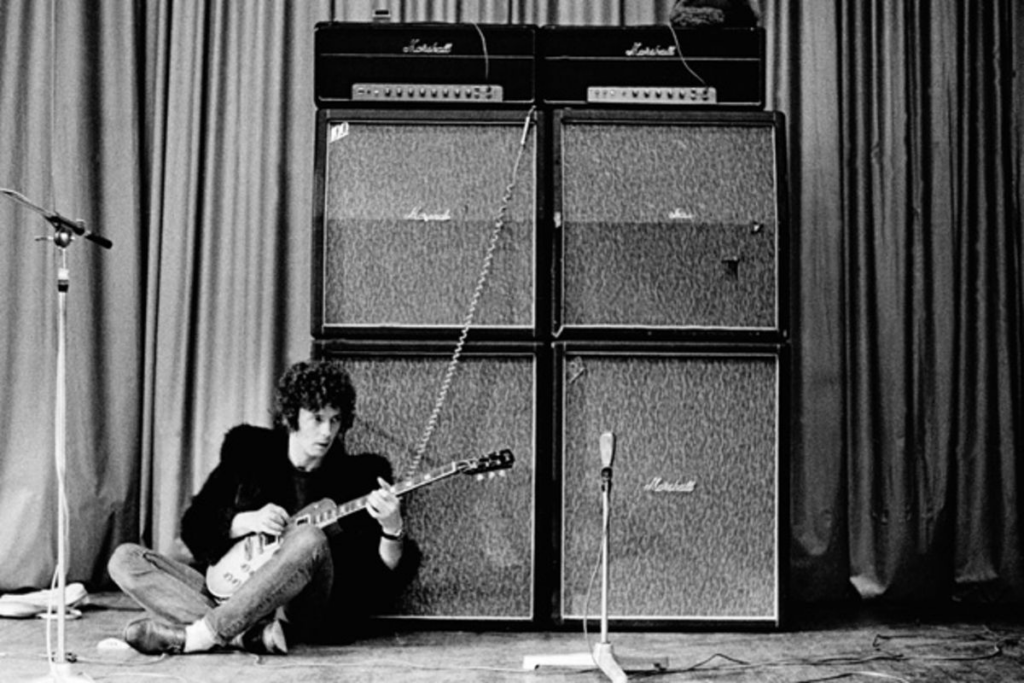
This was the beginning of the Marshall stack, which is now a familiar sight at rock and metal concerts. Its look was befitting a successful rock band, and its distortion and volume were mandatory.
Sometimes distortion was created accidentally by using a broken amp.
Later, musicians broke their amps deliberately. Dave Davies of The Kinks sliced his amp’s speaker cones with a razor blade to get the sound made famous on You Really Got Me.
The blues play a big role in both rock & roll and heavy metal, though in metal its influence is mostly in its repeating riffs and foreboding lyrics. When Screaming Jay Hawkins sings I Put A Spell On You, it’s easy to believe in his dark powers.
There’s a legend that bluesman Robert Johnson went down to the crossroads and sold his soul to the devil in exchange for amazing guitar talent.
There’s some borderline evil in the blues.

In the 1960s, musicians in the UK were enamored of American blues.
Bands like The Yardbirds, John Mayall & The Bluesbreakers, and Cream were part of what became called the British Blues scene. When their music was slowed down by bands like Led Zeppelin and Black Sabbath, and the bass was turned up, the sound got heavier. Journalist Chris Welch said, “It’s when they learned to relax, really, I think that’s when bands began to become heavy.”

Jimi Hendrix came from a blues background and he added some psychedelic elements, feedback, effects pedals, whammy bars, and unusual chord voicings to create a new kind of guitar hero.
His innovative playing has long been copied in metal bands, but he considered himself a blues guy and earned his initial popularity in England, among the British blues rock guitarists and fans.
Let’s talk about the rock & roll front man.
Singers are usually seen as a band’s leader, whether he is behind the scenes or not. In rock & roll, it’s vitally important for the front man to connect with the audience. This can be through an everyman demeanor like John Fogerty, or a space alien persona like David Bowie, or really anything in-between. The front man must give the audience something to believe, whether it’s working as hard as they do, or feeling as isolated as they do, or providing the fantasy escapism they need.
Metal singers also need lung power and usually a high vocal range. This is where the influence of classical, and specifically opera, comes in.
Opera and heavy metal have a flair for the dramatic.
Breastplates and horned helmets fit both the opera and metal stereotypes, but so do extravagant and expressive singing, particularly in higher registers.

In metal today, virtuosity is as important in metal as it is in classical, so let’s talk about Paganini for a second.

He was a child prodigy violinist in the late 1700s, and played with such speed, dexterity, and perfection that people believed he sold his soul to the devil to get such talent. This is the same story people told about Robert Johnson two centuries later.
Another rumor was that Paganini had killed a woman, used her intestines as strings, and held her soul in his violin. Her screams could be heard in his playing.
It doesn’t get much more metal than that.
Rumors aside, Paganini‘s talent was indisputable.
He composed 24 caprices that push players to the limits of their abilities. Here is his extremely difficult Caprice 24 played by both classical violinist Hilary Hahn and metal guitarist Bernth. Each is remarkable for their dynamics, fluidity, precision, and the hours of practice required to get to this level.
The jazz influence on heavy metal comes in the form of swinging rhythm sections, particularly drummers. When John Bonham of Led Zeppelin and Bill Ward of Black Sabbath wanted to, they could swing as hard as Gene Kupra or Buddy Rich.
Metal and jazz also use something known colloquially among musicians as the “push.” It’s when you play a note early, and it’s usually part of the arrangement. Often, it’s when a new chord is played not on the first beat of the measure, but on the last eighth note of the previous measure. Pushing the chord change early (and without speeding up) adds excitement and variation to the song.
So, we can broadly define heavy metal as:
Aggressive, riff-based music with distorted guitars, virtuosic performances, exciting rhythms, and an out of control and possibly evil front man.
Black leather pants optional.
So how did all these elements come together?
In the post-Woodstock 60s, rock & roll lost its roll. It was no longer about cars and girls and dancing and surfing. It became more political, primarily in response to the Vietnam War, and it got more angry and direct. Musicians and writers made no bones about the failings of mainstream society.

If all society had to offer was getting a job or getting drafted, it was better to buy a motorcycle and hit the road.
We get the term “heavy metal” from Steppenwolf’s song Born To Be Wild.
The line “heavy metal thunder” may describe the sound of a motorcycle, but it also perfectly describes the sound of the song it’s in.
It describes the sound of other bands of the time, too.
Blue Cheer had the reputation of being the world’s loudest band. Their cover of Eddie Cochran’s Summertime Blues is one of those songs often mentioned as the first heavy metal recording, though some argue that it’s The Beatles’ Helter Skelter.
Two cities are very important in this story. They’re both industrial towns, and the industries weren’t doing well at the time. Places like these, with poor economic outlooks, sometimes become incubators for creativity. Frustrated people find new ways to express that frustration.
These cities were Birmingham, England, and Detroit, Michigan.

They were working class towns with low wages and high crime rates. The peace and love movement of the late 1960s meant next to nothing in that atmosphere.
The members of Black Sabbath had been in various blues bands around Birmingham. They got together hoping to form a heavy blues band. They called themselves Earth until they found out there was another band with that name.
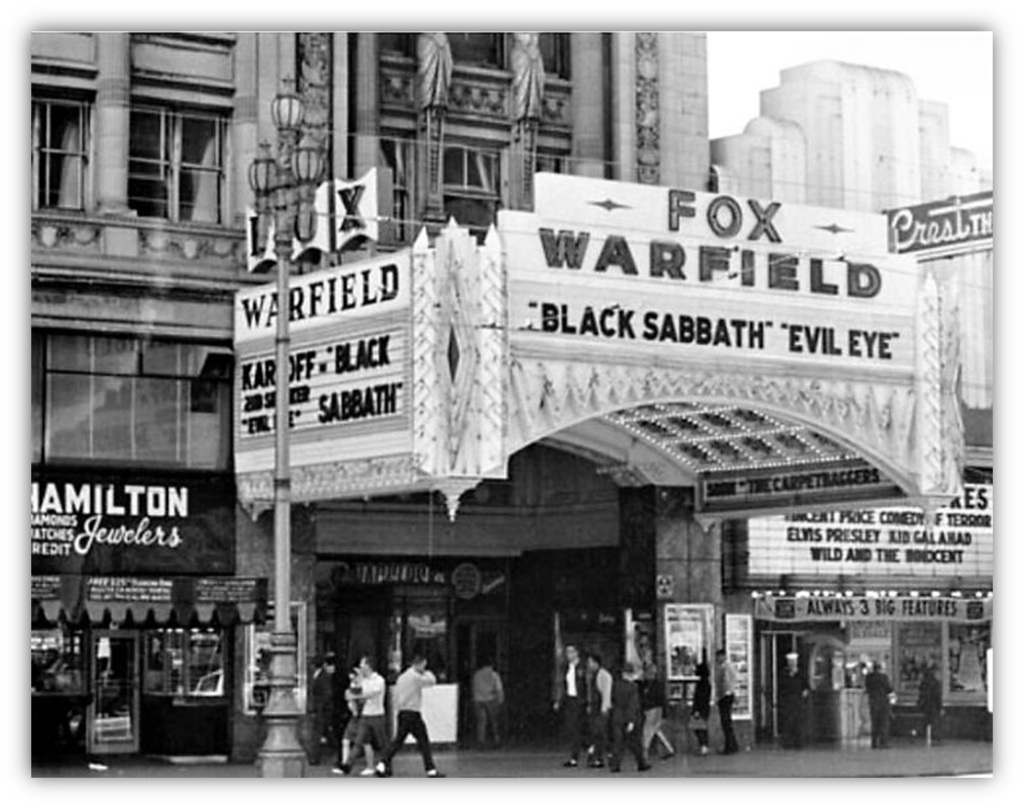
Their new name came from a marquee over a theater playing the horror film Black Sabbath.
They kept the film’s dark atmosphere in mind when writing their second song, also called Black Sabbath. It’s about flames and Satan and black figures and people running in fear, and its main riff includes the “devil’s interval.”
Also known as a tritone because its notes are three whole steps apart, the devil’s interval is so dissonant that people once believed the devil lived inside it. Naturally, it’s used in metal all the time now.
When The Yardbirds broke up, they were still contractually obligated to play a tour of Scandinavia. One of the band’s guitarists decided to put another band together, call it The New Yardbirds, and do the tour. Friends of friends suggested a singer and drummer from a northern blues group called Band Of Joy, and he got a bass player he knew from his session work.
That’s how Londoners Jimmy Page and John Paul Jones met Robert Plant and John Bonham.
They, of course, renamed themselves Led Zeppelin. Plant’s screech and Bonham’s muscle are pure Birmingham. But Led Zeppelin didn’t like being called heavy metal. They could be as heavy as any band around at the time, but they could be light and sophisticated, too. The same band that gave us Communication Breakdown gave us Black Mountain Side, next to each other on their first album.
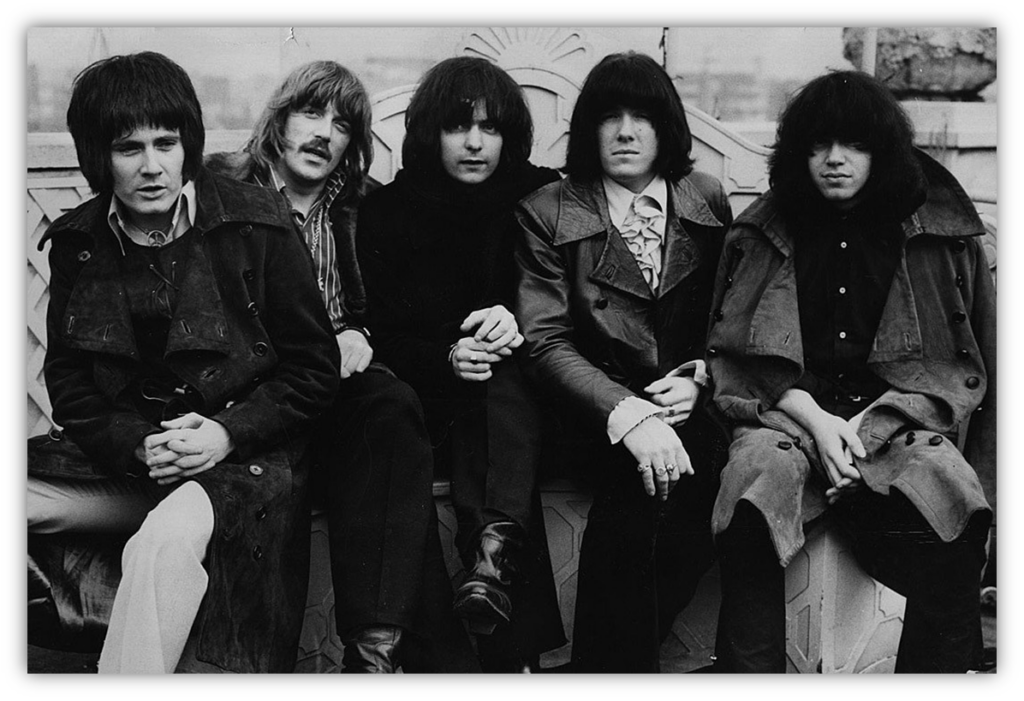
Also in London, the first iteration of Deep Purple started up.
The band had many lineup changes over the years, and fans refer to the various lineups as Mark I, Mark II, Mark III, and Mark IV.
Mark I ran through 1968 and 69 as a hard rock and progressive band. When keyboardist Jon Lord and guitarist Richie Blackmore joined for Mark II, they went in a harder direction with some classical influences. Along with Black Sabbath’s Paranoid and Led Zeppelin’s second album, Deep Purple’s In Rock are often cited as instrumental in cementing metal’s characteristics, even though none of these bands thought of themselves as heavy metal.
Meanwhile in Detroit, bands were producing the fastest and loudest rock in the country.
“Flower Power was nice, but that wasn’t enough power.”
Wayne Kramer of The MC5
He was talking about needing enough power to fix politics, but he could easily have been talking about amplification.
Honestly, they weren’t heavy metal. Though they would later be considered early punk, they were more interested in free jazz and put its spirit of anarchic improvisation and experimentation to use.
Iggy Pop & The Stooges were another Detroit band with incendiary live shows, and Iggy is sometimes called the godfather of punk. They’re not metal, but their stripped down, amped up, sound isn’t far off.
The MC5 and The Stooges are the two bands that get mentioned most when talking about Detroit rock. This isn’t due to record sales, but because they influenced so many other musicians that came later, mostly in the punk and metal scenes. It’s important to remember the other musicians from Detroit pushing rock harder: Bob Seger, Ted Nugent, Mitch Ryder and the Detroit Wheels, the Rationals, Scott Richardson, Suzi Quatro, and Alice Cooper.
Alice Cooper, the person, began life in Detroit as Vincent Furnier but his family moved to Phoenix when he was in high school.

Alice Cooper, the band, started there, moved to Los Angeles, and then to Detroit. The Los Angeles rock scene, home of the Laurel Canyon singer/songwriter scene, didn’t understand his band’s theatrics.
The old Hollywood vaudevillians got it, however, and Cooper became close friends with Groucho Marx. That leads us to this story.

Once you get past the snakes and guillotines and hangman’s nooses:
Alice Cooper is a great songwriter.
Bob Dylan said as much. Hits like School’s Out, I’m Eighteen, and No More Mr. Nice Guy have memorable melodies and could easily be redone in a pop or country version. Versatility is the sign of a good song.
But none of these artists are necessarily heavy metal. Blue Cheer, Black Sabbath, Deep Purple and the rest could be considered hard rock or British blues or proto-punk, depending on the ear of the beholder. The first album that was heavy metal and nothing else came in 1980.
But for that:
We have to go back to Birmingham.
See you here next week.

Rumble
Link Wray
1958

Miserlou
Dick Dale
1958

Purple Haze
The Jimi Hendrix Experience
1967

Born To Be Wild
Steppenwolf
1968

Summertime Blues
Blue Cheer
1968
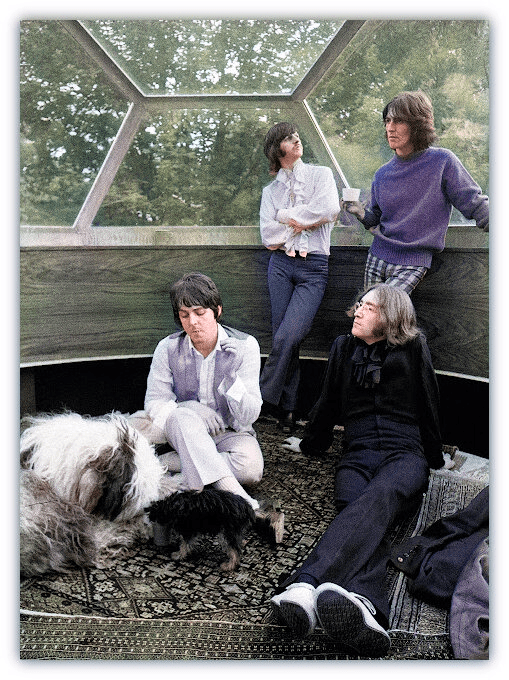
Helter Skelter
The Beatles
1968

Communication Breakdown
Led Zeppelin
1969

Kick Out The Jams (NSFW)
The MC5
1969

Checkmate
Scott Richardson SRC
1969

Black Sabbath
Black Sabbath
1970

Speed King
Deep Purple
1970

1970
The Stooges
1970
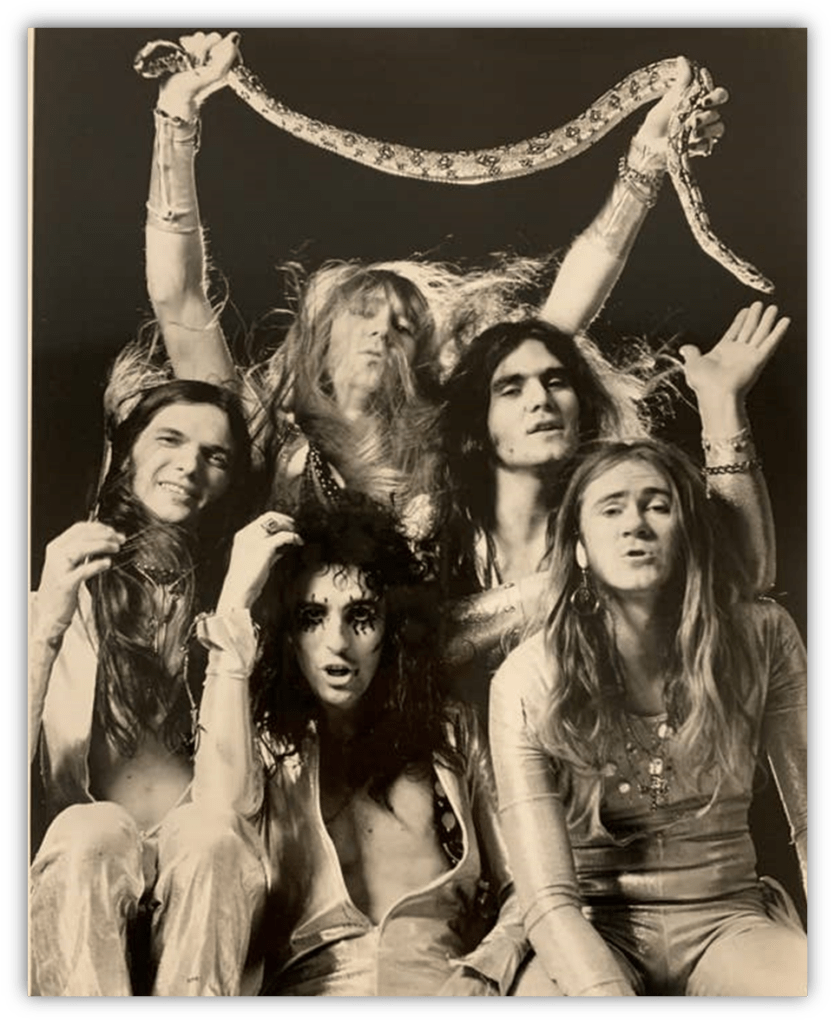
Under My Wheels
Alice Cooper
1971

Daytona Demon
Suzi Quatro
1973

The Red And The Black
Blue Ӧyster Cult
1973

Stone Cold Crazy
Queen
1974

Run With The Wolf
Rainbow
1976
(Let the author know that your liked their article with a “Heart Upvote!”)




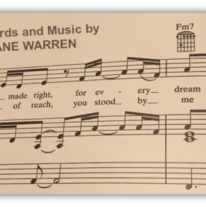

In the beginning, John Lennon was developing in his mother’s womb.
And John Lennon said “let there be be a new abrasive sound in the world to signify rebellious fury.” And his pregnant mother tripped on a tin can, and kicked it. And the can flew and struck a nearby guitar that had been discarded.
And the guitar made a noise. And John Lennon called that noise “heavy metal.” And it was good.
(Great write-up as always, Bill! Love that you included Paganini. And thanks for the links!)
I think I could hazard a guess at who we’re heading back to Birmingham for but I’ll avoid any spoilers.
I’ve always thought of the Kinks; You Really Got Me and All Day and All Of The Night as forerunners to heavy metal. I love the fuzzed up crunch of a guitar sound and its amazing that they were doing that in 1964.
Ringo’s impassioned yell ‘I’ve got blisters on my fingers’ might be my favorite vocal contribution of his to The Beatles.
Great stuff as always
Detroit and Birmingham? Surely we’ll get to Norway eventually, right? For a genre that is generally way too heavy for me, I still find this early stuff to be entertaining.
Norway? Ja, sure, but not until Part 14.
I’m kidding but there’s way more to this metal thing than I thought, and it’s more interesting than I thought. Stay tuned.
Man, I live for this column!
V-dog, I have questions…
thegue, I have a few answers….
3 – He made his living as a musician but was never rich. Towards the end of his life, he had to keep touring to pay his medical expenses. I’m positive he was lonely on the road.
4 – And sometimes that versatility shows itself in the same song: from melancholy vocal harmonies to frantic, angry bombast within “Behind Blue Eyes.”
5 – Maybe the chart below will help. It’s the chromatic scale, which is all the white and black keys on a piano, in order from A to A. (Since it’s all the notes, it could have started anywhere but I chose A.) The interval from one note to an adjacent one is called a half step or a semitone, so the interval from one note to another two half steps away is called a whole step or a whole tone.
With a tritone, we’re counting three whole tones, hence the name. So those three intervals are A to B, B to C#, and C# to D#. Or if you count three whole tones down from the higher A, the intervals a A to G, G to F, F to D#. Either way, we get D#, smack dab in the middle of the chromatic scale. Make sense?
6 – I think it remains to be seen.. The ‘net has made it easier to find musicians of like minds, and they don’t have to be in your hometown. On the other hand, that means more isolation because musicians don’t have to blend their styles with someone local.
If I’m playing progressive death skiffle and find some other progressive death skiffle on the internet, it’s likely we’ll make great progressive death skiffle, but it will be in isolation from new influences. Our progressive death skiffle won’t progress much. But if I meet an Edo funk bassoon player at my local pub, we could create something brand new together. And that would be progress.
So I say, do both. Hear what’s happening in your favorite genre, but check out what’s happening in your region as well. Don’t pigeonhole yourself.
#1 – do you recognize “Caprice 24” from this? Julian Lloyd Webber:
https://youtu.be/TMCb90JpvxY
Okay, that’s cool as hell, but wouldn’t it just be easier to CUT YOUR DAMN HAIR? I lost track of how many times it looked like he was trying to sweep hair out of his face.
TL;DR: No, I’d never seen/heard this before. Still wondering why I know this piece. Also can completely understand why people said he was the Devil’s Violinist, Charlie Daniels be damned.
Hey, Bill, where would you put Living Colour’s take on “‘Talkin Bout a Revolution”? Heavy metal or just straight-ahead rock? I really have no clue. I will say it’s the hardest song ever to top my weekly charts.
Hmmm. Just listened to a couple live versions and it’s just rock to me. I always thought of them as more hard rock than metal but it’s an indistinct distinction.
And Justice for All makes me want to go back in time and take a swing at the guy who was administering this forklift test I couldn’t pass. And then barge into my boss’ office and shout: “You are not a man of God!” And fling my I.D. in his general direction.
Alas, I bought the Metallica reissues after I walked off the job.
That’s why I like The Art of Self-Defense.
From The Art of Self-Defense.
Sensei: What’s your favorite style of music?
Casey: Adult contemporary.
Sensei: No. It should be metal.
Casey: You mean like hard rock?
Sensei: Metal is much more aggressive than hard rock. From now on, you
listen to metal.
Good advice, as we’ll see in this column soon.
Bill, you have brought back so many memories of high school in the late ’60’s.
maybe it’s just me, but I seem to remember that teens were able to assimilate
all the music of the time and just enjoy it for what it was.
I enjoyed all the groups you mentioned and had many of their albums but it seems after the disco craze of the ’70’s, you had to stake out a music genre and claim it for your own and stand fast on that hill and proclaim any other
music null and void.
That’s what turned me off on a lot of heavy metal music from the ’80’s.
I’ve talked about loving AC/DC, Meatloaf and others but I was told that if I didn’t bye into heavy metal full time, I was not a fan.
My belief of any music ( classic, rock, R&B, soul, easy listening, heavy metal etc.) is “If It Makes You Move (fast or slow) It’s a Groove!”.
It seems like the 60s and early 70s was more open-minded in terms of genres, but that’s in retrospect. We have to remember they still used the term “race records” in the 1950s. A lot changed in the 60s, but a lot didn’t.
There has always been a segment of narrow-minded listeners and another segment who honestly like everything. That second segment is very small. (Think about how many times you’ve heard someone say, “I like everything, except country.” Or “…except rap.” Or “…except insert genre here.”)
Those folks who limit themselves to a single genre or subgenre do themselves a disservice. Insisting someone else isn’t a metal fan if they also listen to disco is just silly.
You say that, but really, you can’t be a true progressive death skiffle fan if you’re still listening to edo funk. (Especially on bassoon).
Early edo funk is ok, but neo-post-scratch edo funk is just noise, man.
Much to love in this article, Bill. I think of Paganini as the Jimmy Page of his era. There’s a piece of his called Romanza, which I’m trying to learn so it can be performed as it should be, as a bodice-ripping MeToo bit of vulgar trash, instead of the gentle, frilly sentimental fluff so many lovely ladies in evening gowns perform.
Paganini wrote a piece for violin which sounds like the heavy breathing, moans, and groans of two people making love – it may be a duet, but he liked playing multiple parts on one violin. Contrary to what’s in Wikipedia, it is not Duetto Amoroso – I heard the song in question a couple of years ago, but can’t remember the title. But almost everything Paganini did was with one thing in mind.
Played the Hilary Hahn clip, and the following immediately showed up in my recommendations:
https://youtu.be/eOjO4ekcJQA
Yes! I’ve seen this. I like Twoset Violin anyway, but Hahn really helps light up their videos whenever she shows up.
Nom-nom-nom….!!
Now we’re talking. And headbanging. And air drumming. And riding motorcycles on stage.
Obligatory Duran factoid of the Day:
It’s a Brummie mini-party at the 2022 RRHOF last year. Ozzy attended to support Judas Priest and was chatting with those other Brummie lads on the bill, Duran Duran, before the show.
Drummer Roger finds out he and Ozzy grew up a mile from each other.
I so want Tommy Iommi to guest on a Duran track some day. 😁
That would rock with a capital W. Wrock!